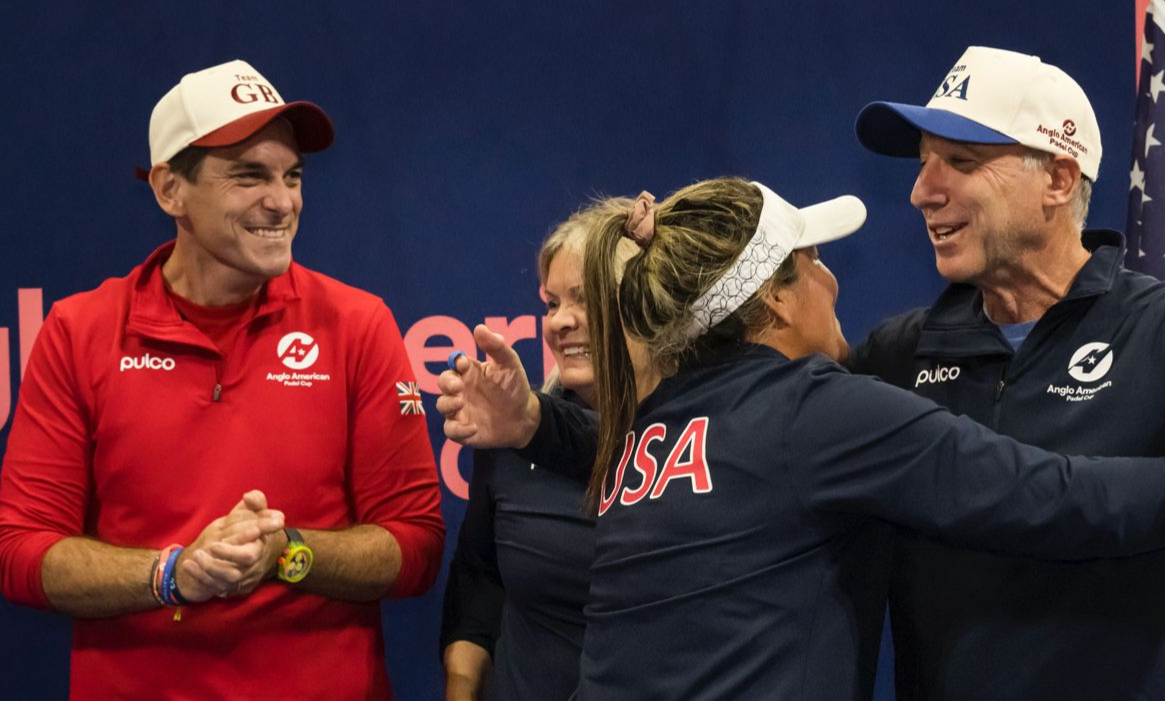Photo courtesy of Reserve Padel
Padel’s U.S. Breakthrough: Syracuse University and Padel 22 Reveal the Sport’s Meteoric Rise
A first-ever U.S. padel report, created by Syracuse University in collaboration with Padel 22, has revealed the trends behind the sport’s growth in America. Focusing on ‘Celebrities, Community and Content’, Padel 22 founder Ben Nichols and the team at Syracuse dive into examining what makes the U.S. padel ecosystem tick. The study delves in-depth to reveal the factors behind padel’s ever-growing popularity, as well as what the future holds for the game.
A Rapidly Growing Market
The University of Syracuse and Padel 22’s analysis paints a vivid picture of the sport’s growth within the American sports ecosystem. In 2020, the U.S. had fewer than 30 padel courts nationwide, yet by 2024, the country has built more than 600 courts for budding athletes. The study attributes padel’s broad demographic as a key factor in this growth; with 30% of players aged under 25, 40% between 26 and 45 and 30% of participants over 46, padel’s truly inclusive nature is evident by the fact that just both younger and older players are taking up the sport. As Padel 22 founder Ben Nichols put it, “Padel in the U.S. won’t be just a sport — it will be a cultural phenomenon.” The game’s social nature and quick pick-up rate allow clubs to create an interconnected community of padel enthusiasts quickly. And, with membership renewal rates at U.S. clubs averaging 90%, the sport appears to be here to stay in the long run. Padel legend Marcos Del Pilar has suggested that a projected 12-15 million players could take to American padel courts by the end of the decade, a far cry from the 100,000 athletes involved in the sport in 2023.
The ’Cool Factor’ – How Celebrities are Shaping the Sport’s Identity
Described by Maroon 5 star Adam Levine as “like pickleball but kind of a little bit cooler”, the report has portrayed the impact of celebrity involvement as a key factor in padel’s success in the U.S. With the Hexagon Cup featuring teams co-owned by F1 driver Pierre Gasly and footballer Sergio Agüero, celebrities have graduated from simply taking a passing interest in padel and blossomed into integrating themselves in the some of the sport’s most high-profile events. As well as communicating events such as the Hexagon Cup and Reserve Cup Series to their extensive fanbases, the financial impetus from celebrities has allowed these events to garner deeper prize pools; The Hexagon Cup and Reserve Cup Series have amassed over $2.5 million cumulatively in prize funds, demonstrating how padel’s economic draw is also increasing. As Del Pilar puts it, celebrity involvement creates “ripple effects” that expand the sport’s social and economic profile.
Celebrities have graduated from simply taking a passing interest in padel and blossomed into integrating themselves in the some of the sport’s most high-profile events
Cage 91 Co. is powered by Taktika Equity
An Inherently Social Sport – What Makes Padel So Unique
The research of Padel 22 and Syracuse University stresses that the sport’s social orientation provides it with a unique dynamic in the U.S. sporting environment. The game’s format – where players exclusively play as a pair – is community-focused, and this ‘social’ opportunity has been jumped on by clubs and booking companies alike. Clubs such as Reserve Padel, based in Miami, combine courts with bars, coffee counters and wellness spaces to emphasise the close-knit feel of padel communities. As 6 Love Sports founder Andi Neugarten comments, “If community is not in the picture, padel risks becoming just another trend that doesn’t stick”. Apps such as Playtomic have tapped into the game’s social side, promoting the ever-popular ‘open matches’ feature where users can match with other players of a similar level, as well as larger social events.
A Media Boom – How Content Creation is Driving Padel Forward in the U.S.
With the rise of post-COVID content creation as a key feature of America’s media ecosystem, the report emphasises that a diverse range of media forms has contributed to Padel’s staggering growth rate. Bill Ullman, USPA President, quips that “the best advertising for padel is playing”, but his words echo true in the statistical report of the sport’s growing online presence. Padel has amassed 52 million global social media followers of padel-related content, featuring videos that range from beginner techniques to advanced skill demonstrations. The game’s professional side has also massively benefited from this online exposure, with Premier Padel streams collecting over 700,000 YouTube subscribers. With events now being aired on major networks such as ESPN+, DAZN and Red Bull TV, the report’s findings convey that the sport’s online presence has never been stronger.
Padel has amassed 52 million global social media followers of padel-related content, featuring videos that range from beginner techniques to advanced skill demonstrations
Grassroots Development and Olympic Aspirations: What’s in Store?
Despite the staggering progress of padel’s popularity in the U.S., the nation – and the global padel community – aspire for even further take-up. Crucial next steps are the sport’s Olympic inclusion, with a potential debut at the 2028 Los Angeles Summer Games a potentially crucial development in garnering attention west of the Atlantic. Building the game’s grassroots foundations is also stressed by the report as of serious importance; its inclusion as an NCAA sport, as well as the widespread development of grassroots programs, will solidify the future of padel in America as a household sport. Ultimately, the future looks bright for an ever-growing sport that is captivating players and creating communities in the U.S. and further growth, both infrastructural and on the court, can be expected.


